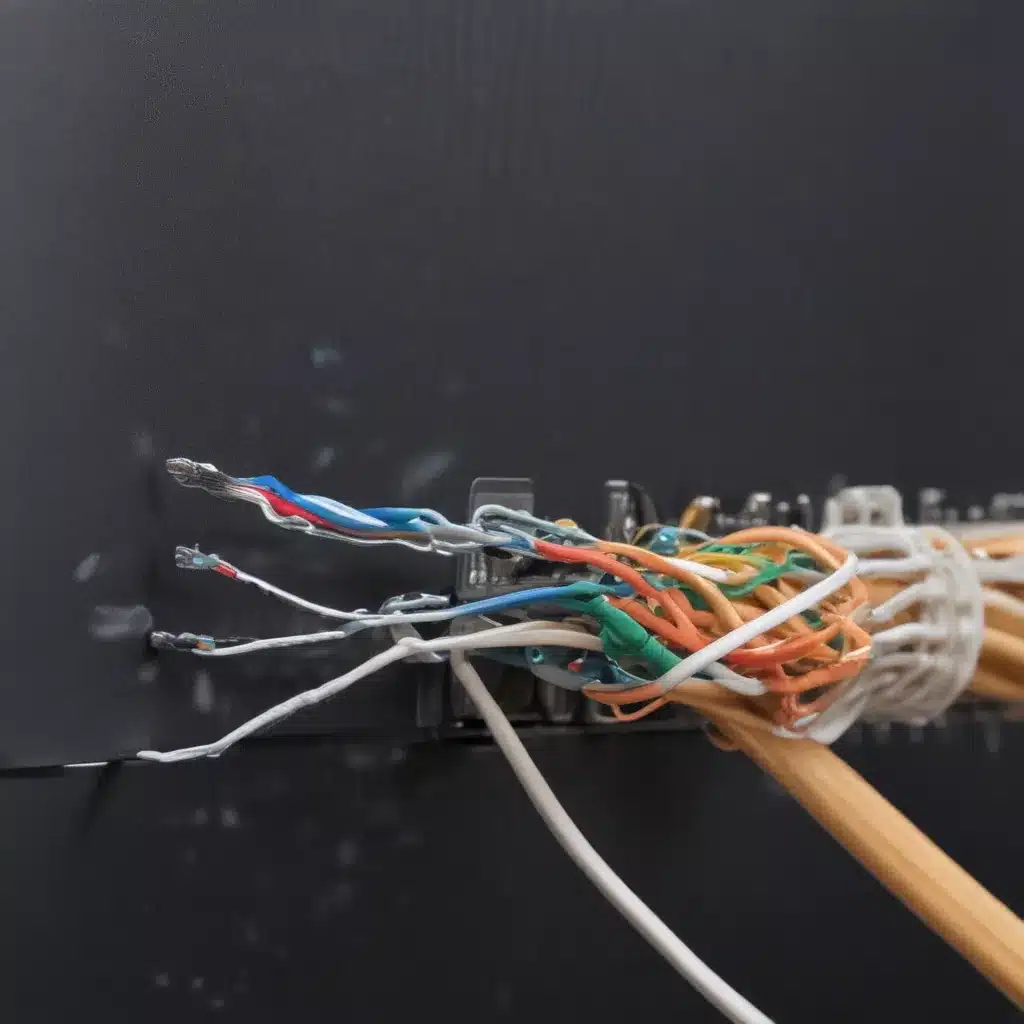The Battle of the Bits: Wired vs. Wireless
As a self-proclaimed tech enthusiast and occasional troubleshooter for my less tech-savvy friends, I’ve spent countless hours pondering the age-old debate – wired or wireless connections? It’s a decision that can make or break your home or office network, like choosing between a trusty sled dog or a shiny new hovercraft to get you through the snowy tundra.
Let’s dive in, shall we? I promise to keep the tech jargon to a minimum and sprinkle in a few relatable analogies along the way. After all, the goal is for you to walk away from this article feeling enlightened, not like you just escaped a black hole of networking mumbo-jumbo.
The Reliable Wired Wonder
Wired connections, my friends, are the rock stars of the networking world. Picture a fiercely determined Olympic sprinter, laser-focused on the finish line with unwavering determination. That’s the essence of a wired connection – pure, unadulterated speed and reliability [1].
When you plug that Ethernet cable into your device, it’s like handing your data a VIP pass straight to its destination. No interference, no random Wi-Fi signals trying to photobomb the party. Just a direct, high-speed line of communication that laughs in the face of spotty coverage or bandwidth-hogging neighbors.
Sure, the setup may be a tad more involved than wireless – running cables, drilling holes, and all that jazz. But trust me, once you experience the consistent, lightning-fast performance of a wired network, it’s worth the initial hassle. It’s like trading in your old bicycle for a Ferrari – sure, the bike was easy to use, but the Ferrari is a game-changer [2].
The Wireless Wanderer
Now, don’t get me wrong – wireless connections have their own charm and appeal. It’s the free-spirited backpacker of the networking world, trading stability for the freedom to roam. Imagine a young, adventurous explorer, unencumbered by the constraints of wires, ready to discover the world one Wi-Fi hotspot at a time.
Setting up a wireless network is a breeze, and the ability to connect from anywhere in your home or office is undeniably convenient. Hosting a party? No problem, just share the Wi-Fi password, and your guests can seamlessly join the network. Need to check your email from the comfort of your patio? Wireless has got your back [3].
However, as with any free-spirited wanderer, wireless connections come with their own set of challenges. Interference from walls, household appliances, and neighboring networks can cause frustrating lag spikes and connection drops. It’s like trying to navigate a crowded city street without a GPS – you might get where you’re going eventually, but the journey will be filled with unexpected detours and frustrating dead ends.
The Tug-of-War: Choosing Your Connection
So, which side should you choose in this epic battle of wired vs. wireless? The answer, as with most tech decisions, is: it depends.
If you’re setting up a home office or a gaming rig where uninterrupted, high-speed performance is crucial, the wired champion is your clear winner [4]. Embrace those Ethernet cables and enjoy the peace of mind that comes with a rock-solid, reliable connection.
On the other hand, if mobility and convenience are your top priorities – say, you’re running a small business with employees constantly on the move or you have a household full of tech-savvy kids – then the wireless wanderer might be your new best friend. Just be prepared to troubleshoot the occasional connectivity hiccup.
And let’s not forget the hybrid approach – a combination of wired and wireless connections that gives you the best of both worlds. Tether your desktop computers and gaming rigs to the wired network, while letting your laptops, smartphones, and tablets roam freely on the wireless side. It’s like having a trusty sidekick and a nimble sidekick working in perfect harmony.
At the end of the day, the choice between wired and wireless connections ultimately comes down to your specific needs, priorities, and the quirks of your physical space. But armed with the knowledge you’ve gained from this article, I’m confident you’ll be able to make an informed decision that keeps your network running smoothly, no matter which path you choose.
Now, if you’ll excuse me, I’m off to see if I can get my neighbor’s Wi-Fi password. Gotta test the limits of that wireless range, you know?
[1] Mustafa, N. (2014). “Internet Connection 101: Decoding Wired vs. Wireless – The Ultimate Guide”. LinkedIn. Retrieved from https://www.linkedin.com/pulse/20141027151821-302916649-know-your-network-basics-wired-vs-wireless-networking
[2] Lifewire. (n.d.). “Guide to Wired and Wireless Home Networking”. Retrieved from https://www.lifewire.com/home-computer-networks-basics-816351
[3] McCann, E. (2021). “Networking 101: VLANs and Network Layers”. Evan McCann’s Blog. Retrieved from https://evanmccann.net/blog/networking-101/vlans-and-network-layers
[4] Intel. (n.d.). “Wired vs. Wireless Gaming: Which is Better?”. Intel Gaming. Retrieved from https://www.intel.com/content/www/us/en/gaming/resources/wired-vs-wifi-gaming.html













